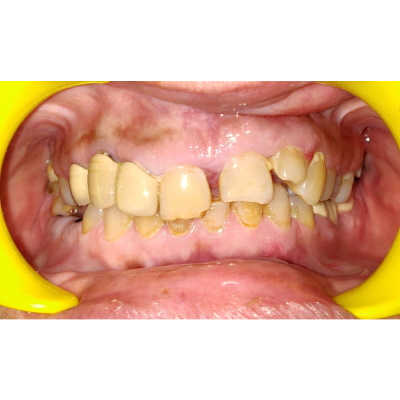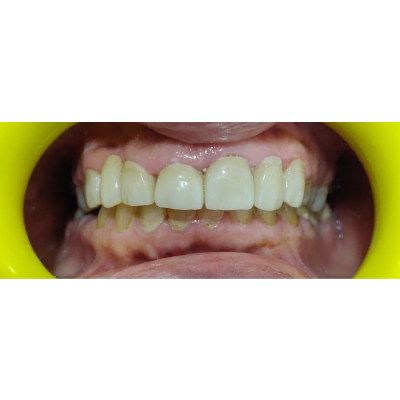NORMAL EXTRACTION
At some stage of their lives, most people will need to have one or more of their teeth removed. This can be for a number of different reasons and can be done under local or general anaesthetic.
Local anaesthetic
An injection is given in the gum, close to the tooth to be removed, to completely numb the area. The patient is awake during the procedure and although they may feel a little pressure during the extraction, they will feel no pain.
There are four main reasons for removing teeth:
- Impacted
The tooth has been prevented from growing into the correct position, by bone or other teeth and is causing problems. This is the most common reason for wisdom teeth extractions. - Orthodontic treatment
Teeth could be removed to make space in an overcrowded mouth in order to allow the remaining teeth to come through straight, or prior to realignment as requested by an orthodontist. - Severe decay or damage
Teeth may have to be removed because they are so badly damaged or decayed that they cannot be repaired. - Gum disease
Gum disease can progress so far that the teeth become loose and have to be removed.
Once a tooth has been removed it is important to allow time for a blood clot to form in the hole (tooth socket) where the tooth was, to begin the healing process. It is therefore important that the extraction site is not disturbed, or the mouth rinsed for at least 24 hours. The dentist may ask the patient to bite on a gauze pad to encourage the clotting process. Vigorous exercise, smoking, and eating food on the affected side of the mouth for three to four days, should be avoided. Gentle cleaning of the teeth with a soft toothbrush during the first few days after the extraction is possible, but avoid the extraction site itself. The diet should be restricted to soft foods for two to four days after any dental extraction. The dentist will also encourage the patient to use hot salty water mouthwashes the day after the tooth was extracted (one teaspoon of salt to a small tumbler of hot water). It is quite normal to experience some swelling to the face after a surgical tooth extraction and an ice pack may help to reduce this.
A little pain or some discomfort may be felt after an extraction and the dentist may prescribe some medication or pain killers to reduce it.
SURGICAL EXTRACTION
A normal adult mouth will contain 32 teeth. Each quadrant of the mouth has eight teeth. The third molar at the back has become known as the ‘wisdom tooth’. Often, they need to be removed and because of their position they can present unique problems both before and after surgery.
Wisdom teeth are often short of space and therefore do not fully grow (erupt) into the mouth. They often have a piece of gum over the back part of their biting surface; this makes them vulnerable to infection (pericoronitis). Lower wisdom teeth are very commonly infected. Such infections give symptoms such as swelling over the back part of the jaw, inability to open the mouth (trismus), pain especially to bite on the area, and a bad taste.
The upper third molar often bites on the gum overlying the tooth and so the dentist may suggest that the upper wisdom tooth be removed or ground down.
Wisdom teeth are also susceptible to dental decay and gum disease (periodontal disease) and their presence may contribute to decay or gum disease in the adjacent molar tooth. There are other more unusual reasons why wisdom teeth are removed in hospitals such as cysts, tumours, and fractures of the jaw in this region.
Most symptomless wisdom teeth should be left unless there is evidence that they are going to give rise to symptoms in the near future. The dentist can do a routine check-up and inform regarding the treatment required.
Although infections are unusual in upper wisdom teeth (unless they are decayed), they often grow in such a way that they rub the cheek. If the lower wisdom teeth are to be removed then most surgeons would consider removing the upper on the same side to prevent it growing too far down (over-erupting) in the future.
Every patient about to have their wisdom teeth removed will have heard horror stories or had friends who have suffered greatly. Whilst a minority of patients do have problems, most patients do not. Upper wisdom teeth are usually very straightforward to remove unless badly decayed. Lower wisdom teeth are often removed under a local anaesthetic with or without sedation. After the area is numbed, gently cutting the gum and moving it to one side exposes the tooth. Sometimes the tooth will be cut into pieces to aid its removal. Following the removal, the wound is washed and the gum stitched into place.
There is no doubt that the surgery is easier for the dentist if the area is healthy. If the patient takes steps to keep the tooth as clean as possible with good tooth brushing and rinsing the area with hot salt water mouth rinses or Chlorhexidine mouth wash, then this will reduce gum swelling (gingivitis) and make it easier for the dentist to operate. Avoid consumption of tobacco and alcohol, a few days before and after the surgery.
The stitches will be removed between 1 and 2 weeks after the surgical extraction.
Swelling and discomfort together with an inability to open the mouth fully may be noticed usually three days after surgery. Most dentists would prescribe antibiotics for difficult lower wisdom teeth extractions in order to avoid any potential infection.
There are many ways in which the patient can help the wound to heal. The medication prescribed should be taken in the manner directed. Hot salt water mouth rinses should be used regularly for five minutes four times a day for a week. The water should be tepid but not too hot as to burn. A tablespoon full of salt should be allowed to dissolve in a coffee mug sized amount of this water.
Discomfort is common following any operation on the body. Most patients find that any pain is easily treated by painkillers.
Pericoronitis is a dental infection that occurs when there is not enough room in the mouth for a wisdom tooth to erupt. The wisdom tooth is partially erupted and the gum tissue covers a part of the top of the tooth. This allows food or plaque to become lodged under the gum tissue flap. If the area becomes infected, it is called pericoronitis and the gum tissue will become swollen and red.
Symptoms include a bad smell or taste in the mouth, discharge of pus from the gum near the tooth, swollen lymph lodes under the chin, muscle spasm in the jaw and swelling on the affected side of the face. You can treat it by rinsing with warm salt water and make sure that food is removed. An antibiotic may need to be given and oral surgery may be necessary to treat this oral care issue.
A dry socket is when the clot in the socket gets broken down leaving exposed raw bone. The pain usually comes on seven days after the operation. The pain is deep-seated and described as throbbing. Risk factors include difficult extractions, smokers, poor oral hygiene and ladies on the oral contraceptive pill. It is treated by washing the socket out thoroughly and placing a dressing in the wound. The discomfort typically lasts 7-10 days and may require a further appointment during this time.
All patients will be numb in the lower lip or tongue for a few hours afterwards. Very rarely, if this persists, it may be that the surgery has stretched or damaged one of two nerves in the area. The nerve to the lower lip runs in a bony canal in the lower jaw. The roots of the wisdom tooth may be intimately involved with the nerve and may cause temporary damage. The nerve to the tongue runs alongside the roots of the lower wisdom tooth in the gum. About one percent of patients will have some numbness post-surgery although the vast majority would expect a rapid full recovery. About one percent of the one percent can expect a slower recovery. Rarely, the numbness can be permanent.
If the socket continues to bleed, the most important thing is to stay calm. The amount of blood loss appears greater because of all the saliva that is mixed with it. Remove all of the clots in the mouth, if necessary, with fingers. Take a swab or clean hankie and put it under the hot tap. Wring the gauze dry and place it directly over the wound and bite hard. The swab should be kept inside the mouth for at least 15 minutes. This will stop 90 percent of all bleeding sockets. If the bleeding persists, contact the dentist immediately.
ORAL AND MAXILLOFACIAL SURGEON
Oral and maxillofacial surgeons focus on treating problems related to the hard and soft tissues of the face, mouth, and jaws (the upper jaw is referred to as the maxilla).
It isn’t necessary to have an oral and maxillofacial surgeon perform every type of oral surgery, however, for complex treatments that may require more invasive procedures or deeper levels of sedation, these specialists may be recommended.
We at Aura dental clinic & Implant Centre prefer that all Wisdom tooth extractions are done by our expert Oral Surgeons.









Contact
- B-105, Tirth jyoti plaza, opp RTO gate, near subhash bridge circle, Ahmedabad, Gujarat 380027
- +91 96864 58860
- info@theauradent.com
